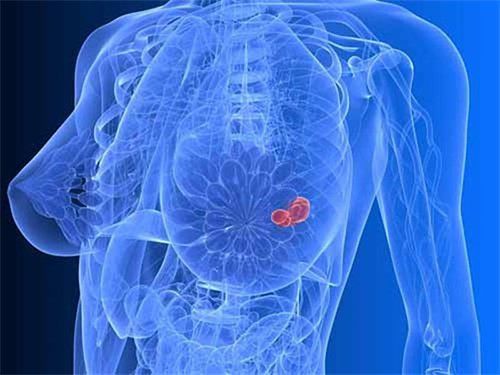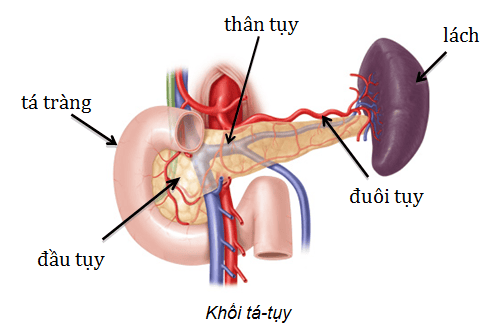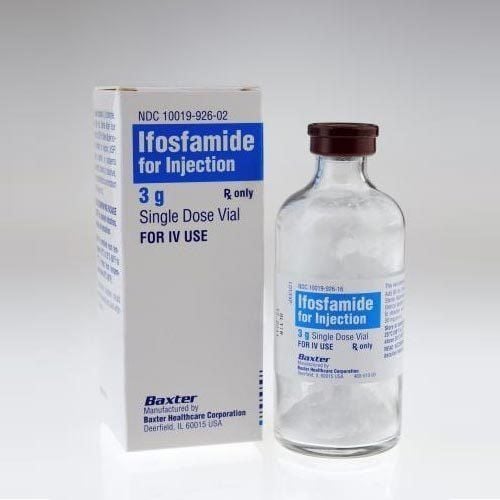This is an automatically translated article.
The article is professionally consulted by Master, Doctor Le Hong Chien - Doctor of Diagnostic Imaging - Intervention - Department of Diagnostic Imaging and Nuclear Medicine - Vinmec Times City International Hospital.
Breast cancer that has spread often goes to nearby lymph nodes under the arm. Sometimes it can also spread to the lymph nodes near the collarbone or breastbone. Knowing if cancer has spread to the lymph nodes helps doctors figure out the best way to treat breast cancer.
1. What is a portal lymph node biopsy in breast cancer?
Breast cancer treatment goes through many stages, some of which include a surgical biopsy of the portal lymph nodes (also known as a sentinel lymph node biopsy, sentinel lymph node biopsy, and a sentinel lymph node biopsy). The scientific name of the breast cancer portal lymph node biopsy technique is Sentinel Lymph Node Biopsy (SLNB), and this technique is different from biopsy when making the diagnosis in breast cancer surgery.
The purpose of a portal lymph node biopsy is both diagnostic and therapeutic. A biopsy of the portal lymph nodes helps doctors to accurately diagnose the stage of tumor growth as well as provide information on whether cancer cells need to be removed. All of the above data is intended to provide doctors with the most comprehensive view of the tumor as well as its development to be able to provide the best treatment for the patient. In addition, to find out if the cancer has spread beyond the breast, a biopsy of the portal lymph nodes in breast cancer is also indicated. This is an important part of the breast cancer treatment roadmap. If the lymph nodes contain cancer cells, the chances are high that the cancer cells have spread to other parts of the body as well.
The lymph node biopsy may be negative for cancer, which means the cancer has not spread and depending on the size of the tumor or the cancer cells, the patient may not need chemotherapy or other treatments. further treatments. If the biopsy is positive for cancer, management will depend on the presence and extent of cancer in the nodes. At that time, treatment methods will also be considered for the patient.
Trắc nghiệm: Những lầm tưởng và sự thật về ung thư vú
Ung thư vú có tỷ lệ tử vong cao nhất ở nữ giới khiến họ rất lo sợ bản thân mắc phải căn bệnh này. Tuy nhiên, không ít chị em có những hiểu biết thái quá về ung thư vú. Thử sức cùng bài trắc nghiệm sau sẽ giúp bạn loại bỏ được những nghi ngờ không đúng về căn bệnh này.
Bài dịch từ: webmd.com
The process of biopsy of the portal lymph node in the treatment of breast cancer is usually performed during breast surgery, before or after anesthesia and consists of the following 6 steps:
Step 1: Anesthetize the breast and inject dye into the area. location of the tumor or around the nipple with a fine needle. This type of dye can help surgeons locate the lymph nodes. Sometimes instead of using dye, some patients need a radioactive tracer, which needs to be injected an hour or even a day before the procedure. In some cases, your doctor may need to use both a dye and a tracer. Step 2: The patient or the technician will massage the breast to spread the dye evenly around the breast. Important areas are marked in about an hour using special devices. Step 3: The doctor makes a small incision under the patient's armpit to remove the lymph nodes Step 4: While the patient is under anesthesia, the doctor checks the lymph nodes for cancer cells or not. Step 5: If cancer cells are detected, the surgeon will remove the nodes that carry those cells, also known as axillary dissection, and can be done at the same time or in another surgery. . The lymph nodes are gradually removed until no more cancer cells can be found, or the cancer cells have spread so widely that the lymph node cannot be removed further. Step 6: If only the portal lymph node biopsy is performed, the procedure does not take too long and the patient can be discharged immediately. However, in the case of a partial or total mastectomy, the patient needs to stay in the hospital longer for treatment and monitoring.

2. Reasons for the need for a biopsy of the portal lymph nodes in the treatment of breast cancer
Breast cancer is formed based on the size of the tumor, the features of the cancer cells, and the number of cells found outside the tumor and in the lymph nodes (metastasis). Identifying these factors will be the basis for doctors to prescribe appropriate treatment methods.
As long as the cancer cells are still localized in the patient's mammary gland, the cancer can still be cured. Breast cancer is only really dangerous when it metastasizes, when cancer cells travel through the blood to other organs in the body. Normally, cancer cells travel around through the lymph node system and find other organs. When cancer cells grow in a new location, they are called metastases. If these cells have spread throughout the vascular system, doctors will need to pinpoint their presence in the lymph nodes to see if cancer cells are moving from the breast. . The primary portal lymph node biopsy is one of the methods to help determine if cancer cells have moved to the lymph nodes. That is also the reason this method is applied.
3. Biopsy of the portal lymph node in breast cancer is indicated in which case?
3.1. For ductal carcinoma in situ The process of biopsy of the portal lymph node in breast cancer is indicated for the following cases:
There is an indication for total mastectomy There is a clinical breast tumor Suspected of invasion Preoperative biopsy specimens It is expected that complex breast reconstruction surgery can be performed after surgery. 3.2. For invasive cancers For invasive cancers, a biopsy of the portal lymph node is indicated for:
Single-focal tumor, small in size, has been identified as invasive carcinoma by As a result of previous biopsies, there were no clinical signs of axillary lymph node metastasis. Biopsy of the portal lymph nodes for T3 stage Tumors Indications can be extended to the following cases: Axillary lymph nodes are palpable and mobile, 2-focal tumors are capable of conservative surgery or have been surgically removed. wide u before.

A biopsy of the portal lymph nodes can be performed before or after chemotherapy, which will be adjunctive to cN0 and cN1 cases (lymphocyte testing under ultrasound guidance. count). For cN1 cases where cytology or lymph node biopsy confirms metastatic lymph node metastasis, systematic axillary lymphadenectomy after treatment is recommended. Post-chemotherapy portal node biopsy to decide not to remove axillary lymph nodes in the setting of a complete clinical and imaging response (ycN0) is not recommended outside of clinical trials. Performing a biopsy of the portal lymph nodes both before and after prior adjuvant chemotherapy has not shown any value. When there is a failure to visualize portal nodes in invasive breast cancer, axillary lymph node dissection should be performed at the same time of surgery. The portal lymph node biopsy is a technique used in the diagnosis and treatment of breast cancer. A portal lymph node biopsy has very few surgical complications compared with a total axillary biopsy. In addition, the recovery time of patients after biopsy is also shorter. This technique has proven effective in providing information about tumor size, cancer cells as well as whether they have metastasized or not. For patients who have been diagnosed with cancer, a biopsy of the portal lymph node will cause fewer problems, including psychological problems, and help the patient recover faster than an axillary surgery.
In order to improve the quality of medical examination and treatment, Vinmec International General Hospital is currently the pioneer medical facility when implementing breast cancer screening by combining 4 technologies: gene testing, endoscopy, ultrasound and immunoassay. In particular, cancer screening with gene technology is a breakthrough new method of medicine.
The application of technology with a system of modern machinery and equipment will bring accurate diagnosis results, positive treatment direction and shorten hospital stay for patients. In addition, Vinmec Hospital also has a team of experienced doctors and experts who will directly perform a comprehensive examination process for customers.
Please dial HOTLINE for more information or register for an appointment HERE. Download MyVinmec app to make appointments faster and to manage your bookings easily.














